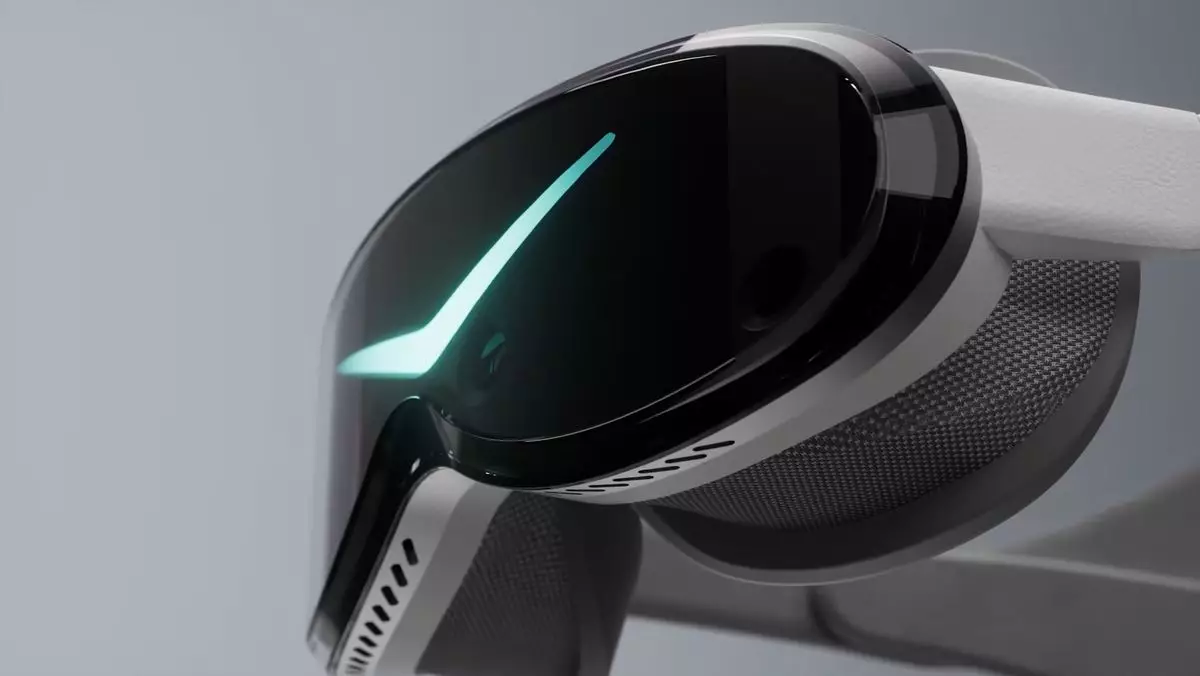The landscape of virtual reality (VR) technology is rapidly changing, and the recent unveiling of the Pimax Dream Air headset marks a significant milestone in the evolution of this medium. In stark contrast to the hefty Valve Index, which tips the scales at over 800 grams, the Dream Air is set to redefine user experience with its ultra-lightweight structure that weighs in at less than 200 grams. This leap forward represents not just a reduction in weight but an exciting amalgamation of cutting-edge technology and sleek design, making it a contender in the burgeoning VR market.
Pimax claims its Dream Air headset stands out as a “small form factor with high performance and full features.” At first glance, the design is eye-catching, featuring smooth curves and a modern aesthetic reminiscent of Apple’s Vision Pro. Its impressive specifications set the stage for high-quality immersive experiences: the headset is equipped with Micro-OLED panels, promising vibrant colors and deep contrasts which contribute to realism in a virtual environment. Furthermore, it employs advanced pancake optics and a Qualcomm chip to deliver enhanced performance.
In comparison to its more robust counterpart, the Pimax Crystal Super, which is marketed as the “world’s first retina-level VR headset,” the Dream Air stands out thanks to its lightweight and modular elements. However, with a starting price of $1,199, the question arises: are consumers willing to pay over $1,000 more for the Dream Air compared to the $699 price tag of the Pimax Crystal Super?
Despite its reduced dimensions, the Pimax Dream Air doesn’t compromise on features. It boasts integrated spatial audio, inside-out tracking cameras, hand tracking, eye tracking, and a USB Type-C port for accessories. Users will also find a self-adjusting head strap and auto-IPD (inter-pupillary distance) adjustments. This comprehensive feature set suggests that Pimax aims to cater to both casual gamers and serious VR enthusiasts. Particularly noteworthy is the inclusion of eye tracking technology, which is absent in many competing models, including the lightweight Bigscreen Beyond, weighing merely 127 grams.
Pimax emphasizes that the Dream Air is a full-featured 8K resolution headset, positioning it as the lightest of its kind with cutting-edge capabilities. This commitment to delivering a quality experience, packed in a lightweight design, could make it the go-to choice for users who prioritize comfort and performance.
The pricing of VR headsets often dictates consumer behavior, particularly for products that are still considered niche. With Pimax positioning the Dream Air significantly higher than its counterparts, it prompts a critical discussion about value. The Dream Air enters a competitive field where shoppers are continuously weighing price against features and technological advancements. The value proposition hinges on whether the benefits afforded by its lightweight design and superior technology justify the steep price.
Moreover, the recent trend toward high-quality virtual experiences has led to increased interest in more affordable alternatives. While the advances in the Pimax Dream Air are undoubtedly impressive, its pricing strategy may alienate customers who are unwilling or unable to invest large sums in VR equipment.
Pimax anticipates that shipments of the Dream Air headset will commence in May 2025, closely following the release of the Micro-OLED Crystal Super. As the VR landscape continues to evolve, this announcement coincides with growing consumer interest in innovative technology that breaks traditional limitations.
Ultimately, the Pimax Dream Air is a beacon of progress in virtual reality, offering a fascinating glimpse into the future of immersive experiences. It will be intriguing to observe market reactions upon its release and whether it can successfully carve a niche among both casual gamers and serious tech enthusiasts. As we stand on the threshold of a new era in VR technology, the balance between lightweight design, high performance, and affordability remains the key challenge for manufacturers and consumers alike.

